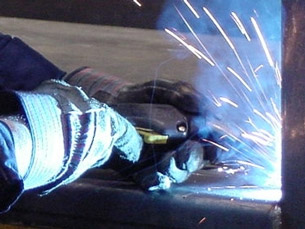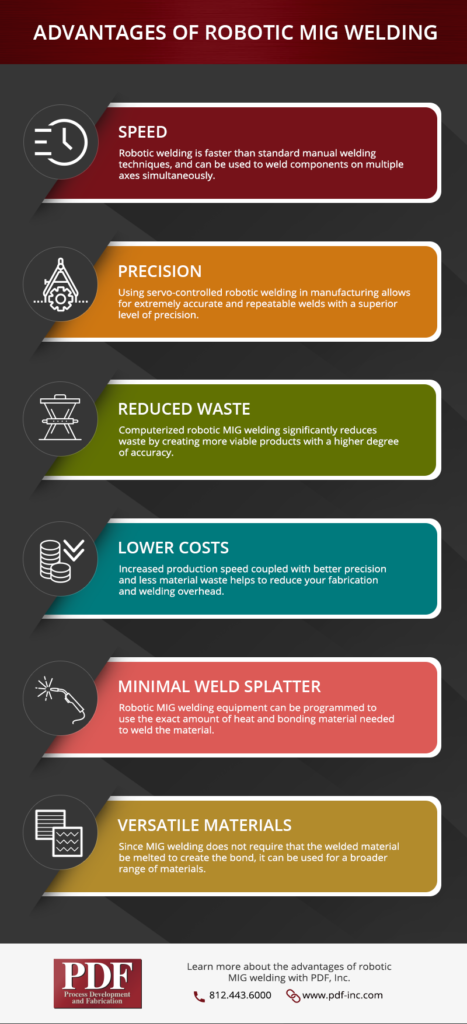PDF, Inc. specializes in providing manual and robotic MIG welding by our certified AWS and CWB welders, ensuring that our customers receive a quality and custom fabricated product each and every time. We have the ability to weld large and complex multi-part weldments and fixtures. Robotic MIG welding allows us to cost effectively and accurately weld large production runs and repetitive welding procedures.
Motoman Robot
Kuka Robot
6 Axis 4200L DR Control 2

Robotic welding is faster than standard manual welding techniques, and can be used to weld components on multiple axes simultaneously. Robotic equipment can quickly adjust the position of the product for exceptionally fast welds with the utmost precision.
 Precision
PrecisionUsing servo-controlled robotic welding in manufacturing allows for extremely accurate and repeatable welds with a superior level of precision. This makes it particularly valuable for complex components and high-volume production runs. The lower potential for human error ensures more profitable fabrication operations.
Computerized robotic MIG welding significantly reduces waste by creating more viable products with a higher degree of accuracy. The added precision of robotic welding allows manufacturers to use less material for added efficiency.
Increased production speed coupled with better precision and less material waste helps to reduce your fabrication and welding overhead. Robotic welding also requires fewer operators, thereby reducing the number of workers necessary to complete a given project.
Robotic MIG welding equipment can be programmed to use the exact amount of heat and bonding material needed to weld the material, reducing the potential for weld splatter during the manufacturing process.
Since MIG welding does not require that the welded material be melted to create the bond, it can be used for a broader range of materials. This makes it particularly useful for metals with high melting points and other materials that are difficult to weld using more traditional methods.
Welding and fabrication are often referred to in similar circumstances with regard to manufacturing techniques. This is largely because welding is a type of fabrication. It is the process of joining two or more pieces of metal, plastic, or other weldable material together using heat, pressure, and filling material. There are a variety of welding techniques that use different heating media and filler material; however, the fundamental principle is the same.
Fabrication refers to a wider range of methods used to manufacture metal products, from initial design through finishing processes. Metal fabrication entails the utilization of specialized tools to cut, bend, and shape metal to meet product specifications. Some of the most common fabrication methods include milling, forming, cutting, die casting, and welding.
PDF Inc. offers an array of fabrication services, from laser cutting and sheet metal fabrication to metal forming. Whatever your metal manufacturing needs, we have the equipment and the knowledge necessary to help you design, engineer, and produce your part or component.
Since 1994, PDF Inc. has been a dedicated provider of specialty design and fabrication of OEM and custom designed metal products for our customers in a variety of industries around the world. We hold our products to the highest industry standards, and can produce unique parts to meet even the most precise specifications.
To learn how our welding and fabrication services can help with your next project, contact our experts today or request a quote.